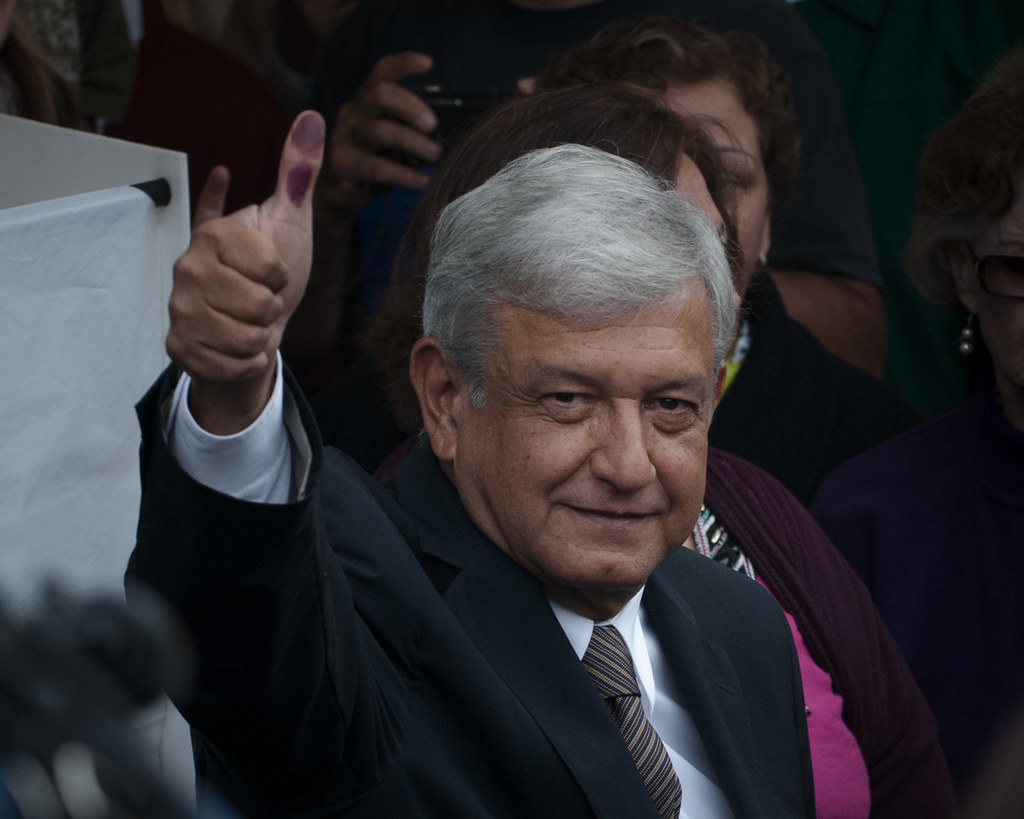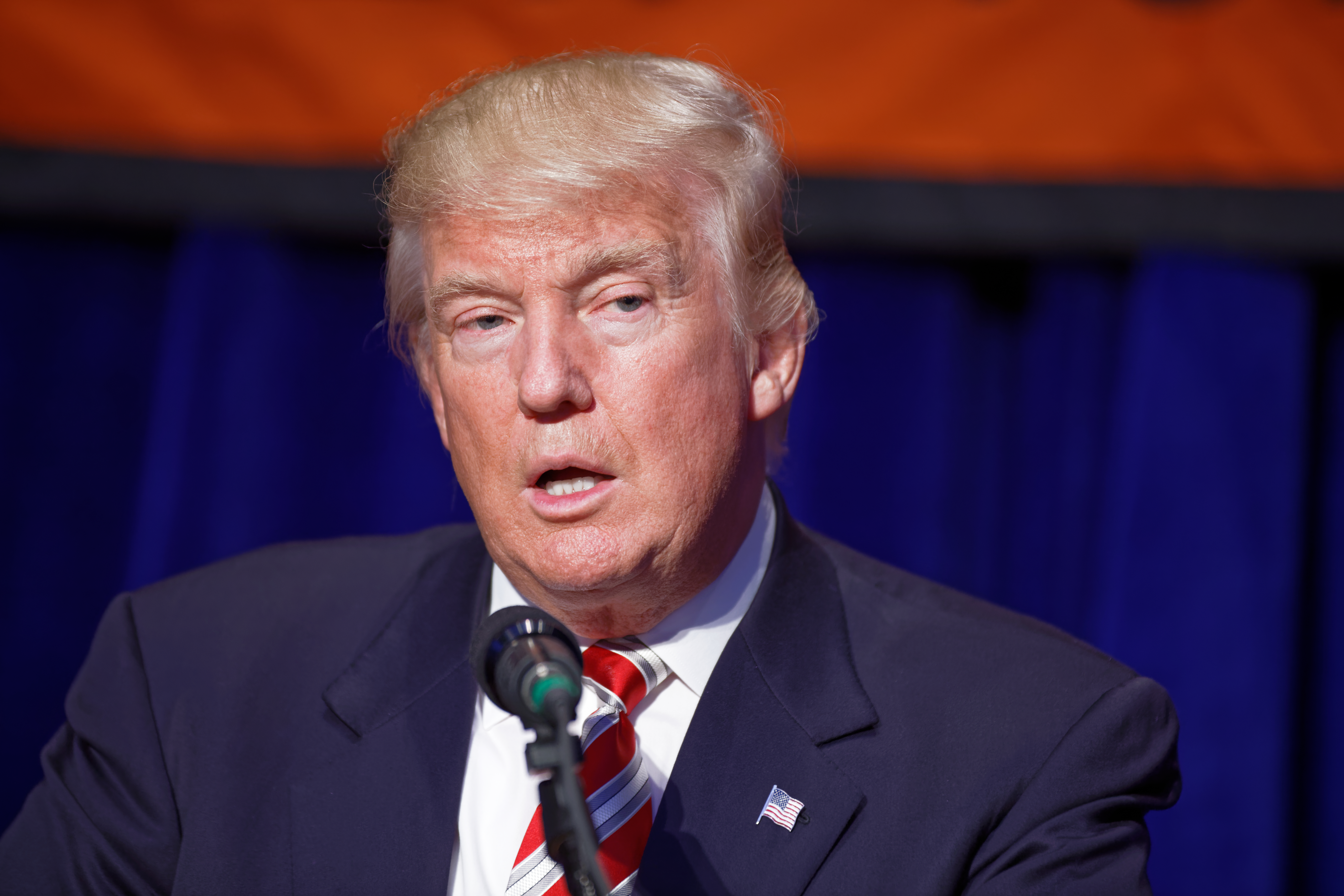President Lopez Obrador uses the process intended to remove an unpopular President from office to instead reinforce his supposed popularity.
On April 10, 2022 Mexico held a Presidential recall election – the first of its kind – which President Lopez Obrador (AMLO) suggested. But why would a sitting President encourage a recall election against himself?

The recall procedure was meant, by the National Electoral Institute, as a method through which an unpopular President could be removed from office. However, along the campaign trail in 2018, AMLO advertised a recall halfway through his term, as a way to ensure voters he could be held accountable.
While some thought this would be an attempt by AMLO to win another election in order to have his term limit extended, that wasn’t the case. Instead, it appears to have been more of a publicity stunt or propaganda attempt. The right to hold leaders accountable is an essential tool of direct democracy, and in the case of Mexico, this tool of civic empowerment is being manipulated into an instrument for political propaganda.
Less than half of the forty percent necessary for the election to be valid showed up to the polls on the day of the referendum. Nevertheless, AMLO continues to assert his victory and has found a scapegoat for the low turnout – the National Electoral Institute, an autonomous agency responsible for holding national elections. Lopez Obrador has criticized the National Electoral Institute for being corrupt and anti-democratic, ultimately asserting that it should be put under the control of the executive branch.
AMLO spent the entirety of the recall referendum process criticizing the National Electoral Institute, known by its Spanish acronym INE, complaining about the lack of resources allocated to advertising the elections. In reality, the INE was set up to fail as it was granted roughly half the budget they would have liked.
There are signs indicating AMLO was prepared to blame the INE for the sake of misusing his power. By going so far as to suggest the independent institution come under the oversight of the executive branch, the President was actively attempting to compromise the independence of national elections – a fundamental characteristic of democracy.
Additionally, Mr. Lopez Obrador asserts that his “victory” in the recall election reinforces the good work he’s done so far, when in reality only seventeen percent of the voting population showed up on the day of the referendum.
This is ultimately more than a recall election with low voter turnout, it’s a prime example of the risk populism poses to democracy.
AMLO’s denial of the election validity draws a parallel with former President Donald Trump’s denial of the 2020 election results. But this isn’t the only similarity the two share.

Former President Trump found success through his populist approach to the public, the defining factor of which is to speak for and represent “the people”.. This is evident in the way that Mr. Trump portrays himself to supporters, “a lone warrior for the people, going up against a corrupt establishment”, separating himself from the institution he seeks to manipulate. This is exactly what makes populism such a danger to democracy.
AMLO, too, seeks the attention of individuals who will fully and blindly support him as the “voice of the voiceless”. A flier advertising the referendum read, “Support President Lopez Obrador, if you don’t participate, the corrupt ones will take away the scholarships, assistance, and pensions that we receive today”. In populist fashion, this statement sounds a lot like clientelism, in which public officials accept a relationship of patronage, winning credit with the poor through the use of symbolic gestures.
The two presidents also use their social media in similar ways. Donald Trump’s Twitter is notorious along with his use of mainstream media. President Lopez Obrador holds daily press conferences, “mañaneras”, essentially a medium between his own Fox News and Twitter through which AMLO controls the narrative.

The Mexican President has done so in order to bypass the traditional media he criticizes for ignoring and misrepresenting the truth. By setting the day’s agenda, AMLO has a direct hand in the twenty four hour news cycle.
Bypassing the well established media for the sake of controlling the narrative is also exactly how former President Trump used his Twitter while in office. Similarly again, AMLO has the tendency to call out his enemies via the mañaneras, of which the enemies include Twitter, Facebook, several members of the media and the INE.

Lopez Obrador was elected president in 2018 and things in Mexico weren’t great, but after a pandemic and global recession, poverty rates remain stubbornly high, economic growth is anemic and homicides are still hovering near record levels.
So without any notable achievements, AMLO launched the recall referendum to write a narrative and distract from the fact that he has accomplished next to nothing more than halfway through his term. Lopez Obrador encouraged the recall to become precedent to ensure the President is always being held accountable.
While it makes for a good storyline, AMLO’s need for widespread support through a recall was ultimately in preparation to secure his choice of candidate for the 2024 Presidential election. It is clear that as the founder of his political party Morena, AMLO really wishes to secure longtime influence in the Mexican political sphere.
https://www.npr.org/2022/04/09/1091594904/mexico-president-recall-referendum-lopez-obrador-amlo
https://www.bbc.com/news/world-latin-america-60993770
https://voxeu.org/article/many-forms-populism
“El Voto de AMLO” by Eneas is licensed under CC BY 2.0.
“Donald J. Trump at Marriott Marquis NYC September 7th 2016” by Michael Vadon is licensed under CC BY 2.0.
“Trump-Twitter-storm-C19Y6T2VQAIO7ZP” by rupertomiller@hotmail. 6672 6121 hijo 66852945 is marked with CC0 1.0.
“President Trump Meets with the President of Mexico” by The White House is marked with Public Domain Mark 1.0.

Maggie, I am not surprised that President Lopez Obrador really held a recall election himself. To be quite frank, this was a smart move as you suggest that this was a great publicity stunt. He used the significant lack of voter turnout to his own advantage in painting himself as an amazing president for Mexico. Having a fair knowledge of the number of people who usually turnout to vote, this was particularly planned well. As less than 40% showed up to vote, he can use that to his own advantage in misleading the general public that he is a distinguished leader wanted by the people. In reality, this is just an outright manipulation of people’s perception regarding the presidency. Underfunding the National Electoral Institute and then using them as the scapegoat for the recall process is such an embarrassment to me. You cannot claim victory where a lot of people actually went out and used their vote to express themselves. Presidents nowadays can get away with nearly anything as long as they find someone to blame for their consequences. The worst part of this is that they use populism to their advantage in appearing to be the charismatic leader everyone would like, when in reality they are just full of lies and not everyone can see that through.
Hello Maggie,
I enjoyed reading your post—it was really informative and shined light on how leaders such as Obrador can use the democratic process to undermine democracy itself. When we think of recall elections in the United States, such as the recent Republican-led effort to recall California Gov. Gavin Newsom, recalls are typically initiated by political opponents rather than the officeholder themself or their own party. As you mentioned, scapegoating the National Electoral Institute—or attacking the integrity of any elections monitor—is a classic tactic of authoritarian leaders looking to consolidate their power. Your discussion of AMLO’s mañaneras was also a particularly powerful example of how authoritarians seek to shape the media discourse in their own ways by bypassing traditional outlets of diversified information. The fact that the referendum results were negligible did not take away from AMLO’s efforts to double down on his own supposed transparency throughout the process as he tried to reestablish legitimacy amongst an unproductive regime. AMLO will definitely be a figure to keep an eye on as the 2024 elections cycle emerges, as democratic erosion has historically escalated in the absence of significant popular resistance.
What stands out in the case of AMLO and Mexico in the process mentioned, is not necessarily the addition of a new amendment or change to existing processes/legislation, but rather the use of a legal feature of the government to maintain a populist front. Whereas focus in other countries lies in changes to its Constitution or transfer of ownership, the idea of whether or not the use of an existing loophole for unintended purposes is a question that will lie in three fronts: moral, political, and legal. And although the other points are important, focusing on the legality aspect, something that surprised me was the fact that only a 40% turnout is necessary for a valid election recall and that less than half of the people required to do so actually appeared. It makes me wonder if there is more to this statistic as to why it might be that people do not appear; tax, inconvenient methods/times, lack of faith in institutions, etc. And when comparing this to the US system where the votes are recounted, it seems like the recall system in Mexico was flawed to begin with and bound to fail. This also might be the result of a prior corrupt establishment, which would be part of a greater issue, but also representative of how difficult the situation is with the way in which current government and corruption stands in Mexico.
When shifting focus outside of legal parameters and how AMLO utilized the n process, even with a low turnout rate, the propaganda is interesting as it relied on the use of a governmental feature which further “legitimizes” the outcome in the sense that the highest attempt of verification has already been put into practice. By using legitimate means, it further legitimizes the campaign, even if the support is not necessarily 100% there to match the claim.